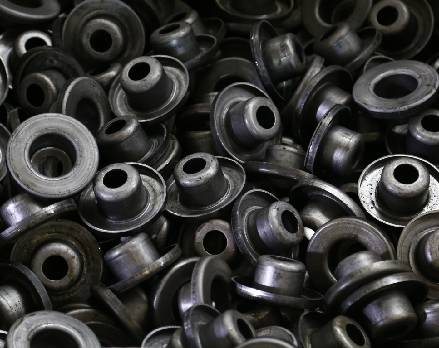 Afrikaans
Afrikaans  Albanian
Albanian  Amharic
Amharic  Arabic
Arabic  Armenian
Armenian  Azerbaijani
Azerbaijani  Basque
Basque  Belarusian
Belarusian  Bengali
Bengali  Bosnian
Bosnian  Bulgarian
Bulgarian  Catalan
Catalan  Cebuano
Cebuano  Corsican
Corsican  Croatian
Croatian  Czech
Czech  Danish
Danish  Dutch
Dutch  English
English  Esperanto
Esperanto  Estonian
Estonian  Finnish
Finnish  French
French  Frisian
Frisian  Galician
Galician  Georgian
Georgian  German
German  Greek
Greek  Gujarati
Gujarati  Haitian Creole
Haitian Creole  hausa
hausa  hawaiian
hawaiian  Hebrew
Hebrew  Hindi
Hindi  Miao
Miao  Hungarian
Hungarian  Icelandic
Icelandic  igbo
igbo  Indonesian
Indonesian  irish
irish  Italian
Italian  Japanese
Japanese  Javanese
Javanese  Kannada
Kannada  kazakh
kazakh  Khmer
Khmer  Rwandese
Rwandese  Korean
Korean  Kurdish
Kurdish  Kyrgyz
Kyrgyz  Lao
Lao  Latin
Latin  Latvian
Latvian  Lithuanian
Lithuanian  Luxembourgish
Luxembourgish  Macedonian
Macedonian  Malgashi
Malgashi  Malay
Malay  Malayalam
Malayalam  Maltese
Maltese  Maori
Maori  Marathi
Marathi  Mongolian
Mongolian  Myanmar
Myanmar  Nepali
Nepali  Norwegian
Norwegian  Norwegian
Norwegian  Occitan
Occitan  Pashto
Pashto  Persian
Persian  Polish
Polish  Portuguese
Portuguese  Punjabi
Punjabi  Romanian
Romanian  Russian
Russian  Samoan
Samoan  Scottish Gaelic
Scottish Gaelic  Serbian
Serbian  Sesotho
Sesotho  Shona
Shona  Sindhi
Sindhi  Sinhala
Sinhala  Slovak
Slovak  Slovenian
Slovenian  Somali
Somali  Spanish
Spanish  Sundanese
Sundanese  Swahili
Swahili  Swedish
Swedish  Tagalog
Tagalog  Tajik
Tajik  Tamil
Tamil  Tatar
Tatar  Telugu
Telugu  Thai
Thai  Turkish
Turkish  Turkmen
Turkmen  Ukrainian
Ukrainian  Urdu
Urdu  Uighur
Uighur  Uzbek
Uzbek  Vietnamese
Vietnamese  Welsh
Welsh  Bantu
Bantu  Yiddish
Yiddish  Yoruba
Yoruba  Zulu
Zulu Understanding the Importance of Carrying Frames in Structural Support and Stability Systems
Understanding the Carrying Frame A Comprehensive Guide
In the realm of engineering and construction, the concept of a carrying frame plays a critical role in providing structural integrity and support for various applications. This essential component acts as a backbone for numerous structures, from bridges and buildings to machinery and vehicle frames. Understanding the functions, types, and applications of carrying frames is vital for professionals in design and construction.
A carrying frame, often referred to as a load-bearing frame or structural frame, is designed to support and distribute the weight of loads placed upon it. These frames are constructed from various materials, including steel, aluminum, and reinforced concrete, chosen based on the specific requirements of the project, including strength, weight, and environmental factors.
The primary function of a carrying frame is to absorb and transfer loads to the foundation or supporting elements effectively. This capability is particularly crucial in scenarios where dynamic loads, such as those caused by wind or seismic activity, are present. A well-designed frame not only ensures the stability of the structure but also extends its lifespan by minimizing the wear and tear on materials.
There are several types of carrying frames, each suited to different applications
. The most common types include1. Beam Frames These consist of horizontal beams supported by vertical columns. Beam frames are widely used in buildings and bridges, as their design allows for large open spaces without internal supports.
2. Truss Frames Composed of interconnected triangular units, truss frames are exceptionally efficient in distributing loads. They are often employed in roof structures, bridges, and towers due to their lightweight and strong nature.
carrying frame

3. Space Frames These three-dimensional frameworks consist of multiple struts and nodes, creating a stable and lightweight structure. Space frames are often used in large-span roofs and can also be found in industrial buildings.
4. Moment-Resisting Frames These frames are designed to withstand significant lateral forces, making them ideal for earthquake-prone areas. Moment-resisting frames use rigid connections to ensure that beams and columns work together to resist bending moments.
Carrying frames have numerous applications across various industries. In civil engineering, they support buildings and bridges, ensuring they can bear the weight of occupants, furniture, and equipment. In the automotive industry, vehicle frames provide the necessary strength and rigidity for safety and performance. Similarly, machinery often relies on carrying frames to maintain structural integrity while functioning under heavy loads.
The design of carrying frames involves careful consideration of various factors, including load calculations, material selection, and safety standards. Engineers utilize advanced software and modeling tools to simulate load conditions and assess the frame's performance under different scenarios. This analytical approach ensures that the final design is both functional and meets regulatory requirements.
Despite their importance, the maintenance of carrying frames is often overlooked. Regular inspections and maintenance are crucial to identifying wear and tear, corrosion, or structural weaknesses that could compromise safety. By implementing a proactive maintenance strategy, ensuring that frames remain in optimal condition extending their lifespan, and minimizing the risk of catastrophic failures.
In conclusion, carrying frames are fundamental components in the construction and engineering sectors, providing essential support for a wide array of structures and applications. Their design, material selection, and proper maintenance are critical to ensuring safety and longevity. As technology advances and new materials are developed, the efficiency and performance of carrying frames will continue to evolve, shaping the future of construction and engineering.
-
Revolutionizing Conveyor Reliability with Advanced Rubber Lagging PulleysNewsJul.22,2025
-
Powering Precision and Durability with Expert Manufacturers of Conveyor ComponentsNewsJul.22,2025
-
Optimizing Conveyor Systems with Advanced Conveyor AccessoriesNewsJul.22,2025
-
Maximize Conveyor Efficiency with Quality Conveyor Idler PulleysNewsJul.22,2025
-
Future-Proof Your Conveyor System with High-Performance Polyurethane RollerNewsJul.22,2025
-
Driving Efficiency Forward with Quality Idlers and RollersNewsJul.22,2025





























